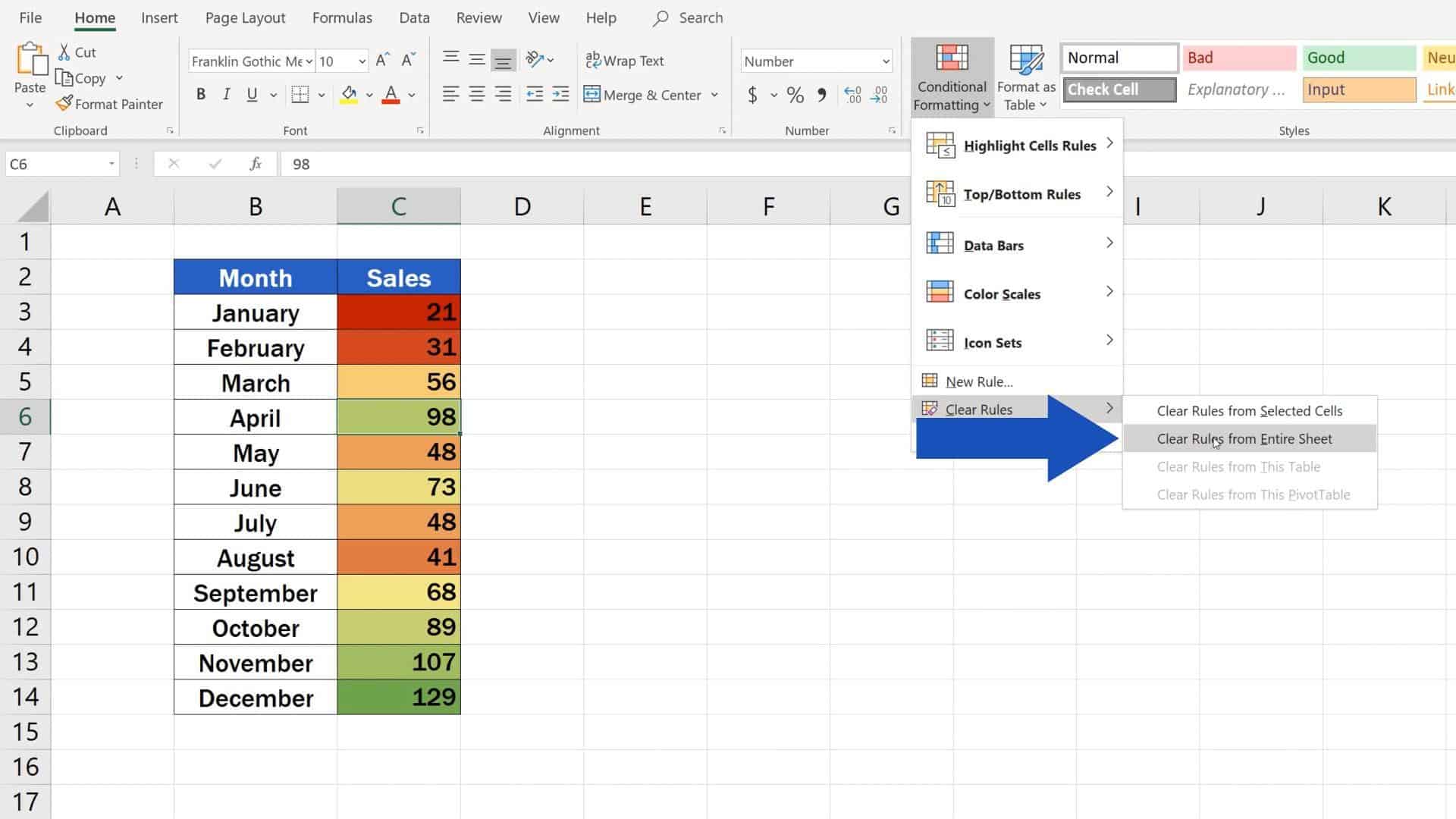

It changes to reflect changes in the data. In the Color box, select Red (see Figure 3.22).įigure 3.22 Conditional Formatting Custom Format Cells Dialog boxĬonditional Formatting is valuable in that it reflects the current data.
On the Font tab of the Format Cells dialog box, in the Font style box, select Bold Italic. But, instead of using the default red text on a light red fill, press the down arrow at the end of that box and select Custom Format. Fill out the Less Than dialog box so that cells that are less than. On the Home tab, in the Styles group, select Highlight Cell Rules from the Conditional Formatting tool (see Figure 3.20). Select the Percentage grades ( P5:P24). Now we are going to use conditional formatting to display any Percentages that are less than 60% with red text formatted in bold and italic. You would hate to lose your Conditional formatting. Your spreadsheet might be printed in black and white. When you do, it is probably a good idea to include other styling in addition to color. You do not have to use the default styles to make your data stand out. (To find the Yellow Fill with Dark Yellow text option, click the the down arrow at the end of the last (with) box). Fill out the Equal to dialog box so that cells that are equal to: Pass have Yellow Fill with Dark Yellow Text. On the Home tab, in the Styles group, select Highlight Cell Rules from the Conditional Formatting tool (see Figure 3.20). If the text for a student is Pass we want the cell to be formatted with a yellow fill with dark yellow text. This time we will use the Pass/Fail text in the Pass/Fail column. 
Let’s try that one more time – to highlight those students who are passing the class.
From there you can select data bars of different colors and opacities (see Figure 3.19).įigure 3.19 Data Bars on the Conditional Formatting toolįigure 3.21 Conditional Formatting Equal To Dialog Box. On the Home tab, in the Styles group, select Data Bars from the Conditional Formatting tool. Figure 3.18 Data Bars on the Quick Analysis tool This makes it easier to see how well each student did in the class – without having to look at the specific numbers. 
On the Formatting tab, select Data Bars (see Figure 3.18).Įxcel places blue bars on top of your values long blue bars for larger numbers, shorter ones for smaller numbers.
At the bottom of your selection, click on the Quick Analysis Tool. Select the values in the Total Points column ( O5:O24). The best thing about Conditional Formatting is that it is flexible, applying specified formatting only when certain conditions are met. 
To make it easier to pick out the most important pieces of data, Excel provides Conditional Formatting. You now have all the calculations you need in your CAS 170 Grades spreadsheet.
Cells Rules - to highlight values that match the requirements you specify. Data bars - to make it easy to visualize values in a range of cells. Use Conditional Formatting techniques to provide flexible highlighting, applying specified formatting only when certain conditions are met. Click Ok again on the Formatting rule dialog. Click Format then click Font tab and pick green colour and click Ok. Select Use a formula to determine which cells to format. On Excel menu, click Home then from Styles group select Conditional Formatting → New Rule. In this example it is from cell B3 to D8. Select the cells that contain the data you want to format. If mark is more than 80 then the entire row will change the colour to green, between 50 and 80 will be in yellow and less than 50 in red. You want to format each row based on Marks. Let's take the example below of a worksheet containing three columns - ID, Name and Marks. This article shows you how to format a row or column based on a cell value.








 0 kommentar(er)
0 kommentar(er)
